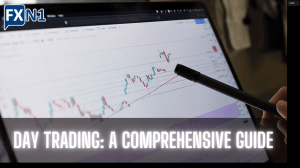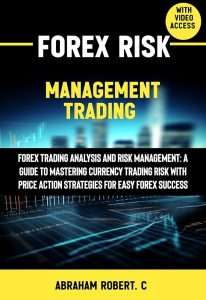Forex Trading: A Comprehensive Guide
Unlock the secrets of Forex trading! Learn how to navigate this dynamic 24/5 market and potentially profit from global currency fluctuations. Start your Forex journey today!

Forex trading, often shortened to FX trading, refers to the global marketplace where currencies are bought and sold. It’s a decentralized, over-the-counter (OTC) market, meaning there’s no central location. Instead, transactions occur electronically between banks, institutions, and individual traders worldwide. This dynamic market operates 24 hours a day, five days a week, offering immense opportunities but also significant risks.
What is Forex Trading? A Deeper Dive
At its core, forex trading involves exchanging one currency for another. The value of each currency fluctuates constantly based on a multitude of factors, including economic news, political events, and market sentiment. Traders aim to profit from these fluctuations by buying low and selling high, or vice versa. The profit (or loss) is realized when the trader closes the position by executing the opposite trade.
Unlike trading stocks or commodities, which occur on centralized exchanges, forex trading happens directly between two parties. This means there’s a higher degree of liquidity, allowing for quick entry and exit from positions. However, this also means greater responsibility falls on the trader to manage risk effectively. Sophisticated trading platforms provide tools and analysis to assist in this process.
Key Players in the Forex Market
- Banks: Major players, facilitating the majority of transactions.
- Corporations: Hedge against currency fluctuations related to international business.
- Investment Funds: Large institutional investors seeking high returns.
- Individual Traders: Retail traders utilizing online platforms.
- Central Banks: Influence currency values through monetary policy.
Understanding Currency Pairs
Forex trading involves trading currency pairs. Each pair represents the exchange rate between two currencies. For example, EUR/USD represents the exchange rate between the Euro and the US dollar. The first currency in the pair is called the “base currency,” and the second is the “quote currency.” A quote of 1.1000 EUR/USD means one Euro can be exchanged for 1.1000 US dollars.
Understanding how these pairs move is crucial for successful forex trading. Numerous factors influence exchange rates, including interest rate differentials, economic growth, inflation, political stability, and global events. Technical analysis, using charts and indicators, can help traders identify potential trends and patterns.
Major, Minor, and Exotic Currency Pairs
Forex currency pairs are categorized into three groups: major, minor, and exotic. Major pairs involve the US dollar paired with other major currencies like the Euro (EUR/USD), British Pound (GBP/USD), and Japanese Yen (USD/JPY). These pairs are highly liquid and have tight spreads (the difference between the bid and ask price).
Minor pairs involve two major currencies excluding the US dollar, such as EUR/GBP or GBP/JPY. These pairs generally have slightly lower liquidity and wider spreads than major pairs. Exotic pairs involve a major currency and a currency from an emerging market, such as USD/MXN (US dollar/Mexican peso) or USD/TRY (US dollar/Turkish lira). These pairs often have lower liquidity and wider spreads.
Forex Trading Strategies
Successful forex trading requires a well-defined strategy. There’s no one-size-fits-all approach, as individual strategies depend on risk tolerance, trading style, and market conditions. Some popular forex trading strategies include:
- Scalping: Short-term trades aiming for small profits on quick price movements.
- Day Trading: Opening and closing positions within the same trading day.
- Swing Trading: Holding positions for several days or weeks, capitalizing on larger price swings;
- Position Trading: Long-term trading strategies holding positions for months or even years.
- Arbitrage: Exploiting price differences between different markets.
Technical and Fundamental Analysis in Forex
Forex traders utilize two primary forms of analysis: technical and fundamental. Technical analysis focuses on price charts and historical data to identify patterns and trends. Traders use various indicators and tools to predict future price movements. Common technical indicators include moving averages, relative strength index (RSI), and MACD.
Fundamental analysis, on the other hand, involves examining macroeconomic factors that influence currency values. This includes analyzing economic data, such as GDP growth, inflation rates, interest rates, and political events. Traders use this information to assess the long-term outlook for a currency and make informed trading decisions.
Combining Technical and Fundamental Analysis
Many successful traders combine both technical and fundamental analysis to create a comprehensive trading strategy. Technical analysis can help identify short-term trading opportunities, while fundamental analysis provides a longer-term perspective. By integrating both approaches, traders can make more informed decisions and manage risk more effectively.
Risk Management in Forex Trading
Forex trading carries inherent risks. Losses can occur quickly, and it’s crucial to implement robust risk management techniques. These techniques should include setting stop-loss orders to limit potential losses, using leverage cautiously, and diversifying your portfolio across different currency pairs. Proper risk management is essential for long-term success in forex trading.
Never invest more money than you can afford to lose. Start with a demo account to practice your trading strategies without risking real capital. Continuously educate yourself on market dynamics and refine your approach based on experience and market changes. Understanding the psychological aspects of trading, such as managing emotions and avoiding impulsive decisions, is equally vital.
The Role of Leverage in Forex Trading
Leverage allows traders to control larger positions with a smaller amount of capital. While leverage can magnify profits, it also significantly amplifies losses. Therefore, using leverage requires caution and a thorough understanding of its implications. Many brokers offer high leverage ratios, but it’s essential to use it responsibly and within your risk tolerance.
Over-leveraging is a common mistake among novice traders, leading to significant losses. Always use leverage sparingly, and ensure your trading strategy accounts for potential losses even with a relatively low leverage ratio. Proper risk management strategies, including stop-loss orders, are crucial when employing leverage in forex trading.
Forex Trading Platforms and Brokers
Numerous online platforms and brokers facilitate forex trading. Choosing a reputable broker is critical. Factors to consider include the broker’s regulation, trading fees, platform features, customer support, and available educational resources. It’s essential to thoroughly research and compare different brokers before making a decision. Reading reviews and checking the broker’s regulatory status can help ensure a secure and trustworthy trading environment.
The chosen platform should offer a user-friendly interface, reliable execution speeds, and a range of analytical tools. Access to educational resources and customer support can greatly aid in learning and navigating the complexities of forex trading. Remember, the right platform can significantly enhance your trading experience and contribute to your success.
Education and Continuous Learning in Forex
Continuous learning is crucial for success in forex trading. The market is constantly evolving, and staying updated on economic news, geopolitical events, and market trends is essential. There are numerous resources available, including online courses, webinars, books, and trading communities. Investing time in education can significantly improve your understanding of forex trading and enhance your trading skills.
Regularly review your trading performance, identify areas for improvement, and adapt your strategy accordingly. Seek feedback from experienced traders and participate in discussions to learn from others’ experiences. Remember, forex trading is a continuous learning process, and the more you learn, the better equipped you will be to navigate the complexities of the market.
Forex trading offers exciting opportunities for profit, but it also involves substantial risks. Understanding the intricacies of currency exchange, market dynamics, and effective trading strategies is paramount. Thorough research, continuous learning, and disciplined risk management are essential for success in this dynamic and challenging market. Remember, patience, perseverance, and a well-defined plan are key to navigating the complexities of the Forex market and achieving your financial goals. Successful trading requires dedication, discipline, and a commitment to lifelong learning. The journey to mastering forex trading is ongoing, requiring continuous adaptation and refinement of your strategies. Never stop learning and always prioritize responsible trading practices.







